All products featured are independently chosen by us. However, SoundGuys may receive a commission on orders placed through its retail links. See our ethics statement.
Shure AONIC 50 vs Bose QuietComfort 35 II
July 6, 2021
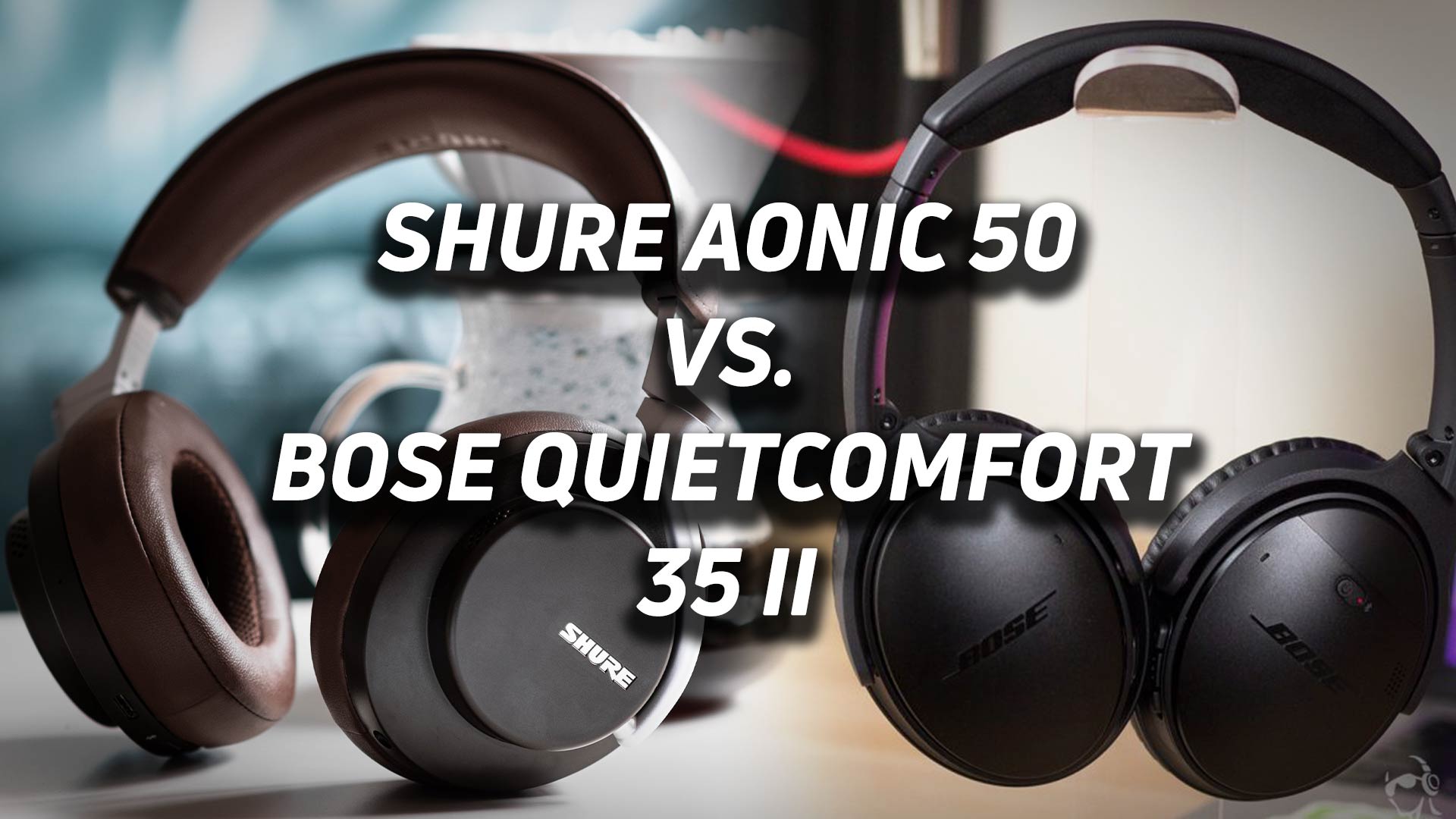
Few things are more rewarding than a high-value buy, and few things offer more value than yesteryear’s flagship. This applies to all corners of technology, and today we’re looking at noise canceling headphones. The Bose QuietComfort 35 II may appear outdated next to the Shure AONIC 50, but this old dog knows some modern tricks. Time to do some digging and see which headset offers the better value.
Editor’s note: this versus article was updated on July 6, 2021, to include an updated frequency response chart for the Bose QuietComfort 35 II per our new measurement system, and to add an Alternatives section.
Shure AONIC 50 vs Bose QuietComfort 35 II: Design differences, similarities
![Bose QuietComfort 35 II[2] A picture of the Bose QuietComfort 35 II lying on an open book.](https://www.soundguys.com/wp-content/uploads/2017/10/Bose-QC35-II2-1.jpg)
Both the Bose QuietComfort 35 II and Shure AONIC 50 rely heavily on plastic for their construction. Shure’s is sturdier as it uses metal for its headband and hinge-reinforcements, while Bose’s ear cups use plastic pivot points. However, the QC 35 II is nearly 100 grams lighter than the AONIC 50, which is important when every gram counts for your carry-on bag. Bose’s headphones are more versatile, too, because they fold flat and collapse into themselves, while the AONIC 50 can only lie flat.
Don’t miss: Ultimate guide to the Bose QuietComfort 35 II
Shure’s plastic resin ear cup housings look and feel much nicer than Bose’s, but both seem durable. The AONIC 50 uses a circular ear cup design and very thick ear pads; this contrasts with the Bose QC 35 II’s oval-shaped ear cups and thinner, softer ear pads. Both headsets are comfortable with glasses, but you’ll be able to wear the QuietComfort 35 II for longer. Neither set of ear pads are breathable, per se, but the QC 35 II allows for more airflow than the AONIC 50. This optimizes comfort but also reduces isolation performance.
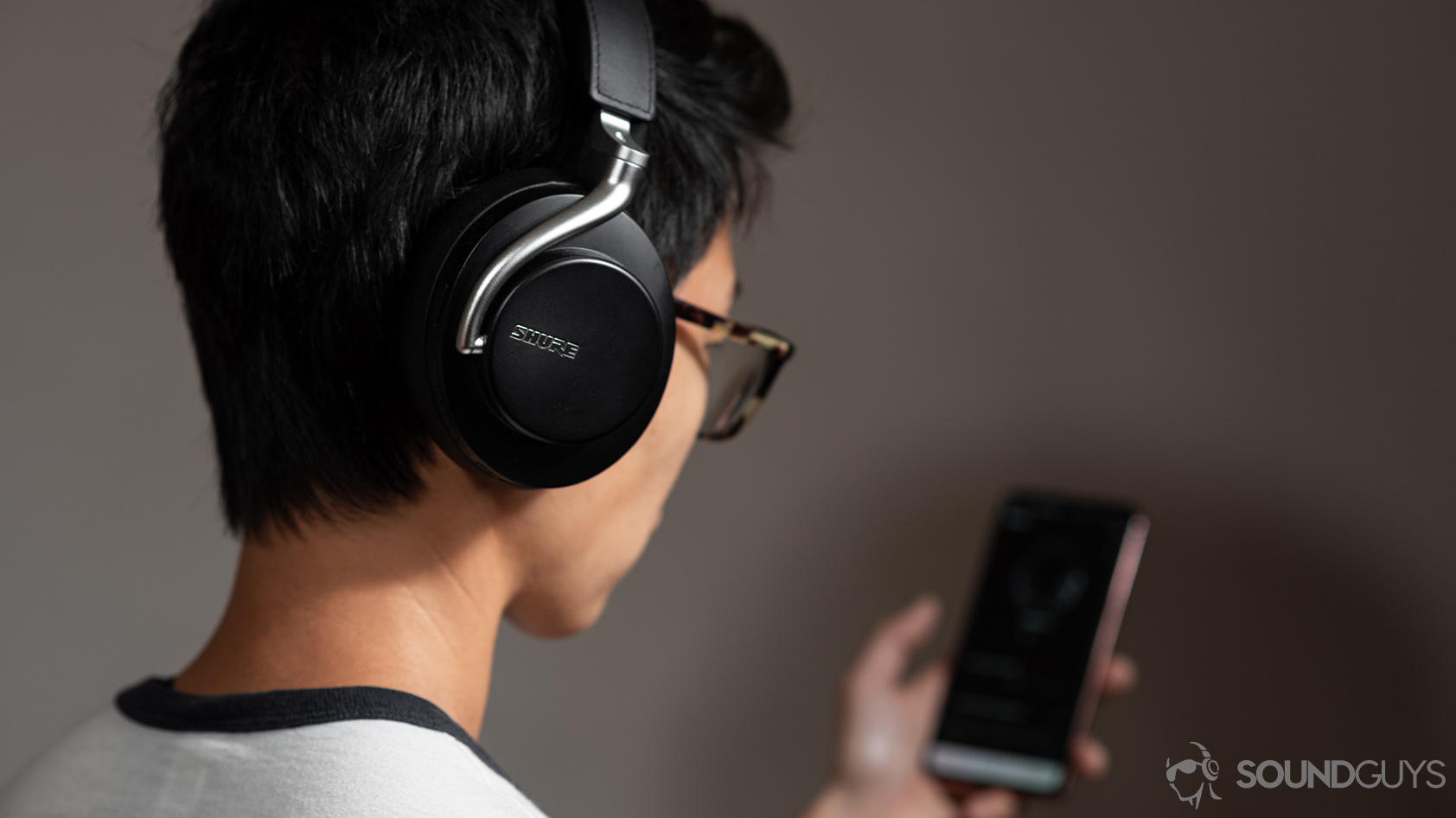
Thankfully, both Bose and Shure’s teams decided to retain the headphone jack, so high-resolution audio will be at your disposal either way. The Bose QuietComfort 35 II has received big software updates to keep pace with modern headphones, but the microUSB charging input reveals its age. The Shure AONIC 50, on the other hand, uses the standard USB-C input for charging which doubles as a USB-C passthrough for audio.
Onboard controls
Bose and Shure both make their respective noise canceling headphones easy to operate and stick to tactile controls only. Listeners who want to remain on the bleeding edge of tech and use touch controls will have to look at either the Bose Noise Canceling Headphones 700 or Sony WH-1000XM4.
![Bose QuietComfort 35 II[4] A picture of the Bose QuietComfort 35 II and the Google Assistant button is located on the ear cup.](https://www.soundguys.com/wp-content/uploads/2017/10/Bose-QC35-II4.jpg)
Bose took a stepped approach to its controls: the multifunction button is set beneath the flanking volume buttons. This makes it easy to differentiate between controls even with gloves on, something I loved about the Bose SoundLink On-Ear headphones. Bose is also great about updating its firmware—the 2017 QuietComfort 35 II supports modern features like hands-free access to Amazon Alexa and Google Assistant, along with Bose AR compatibility. While you can still use your virtual assistant of choice with the AONIC 50, direct voice access isn’t yet available.
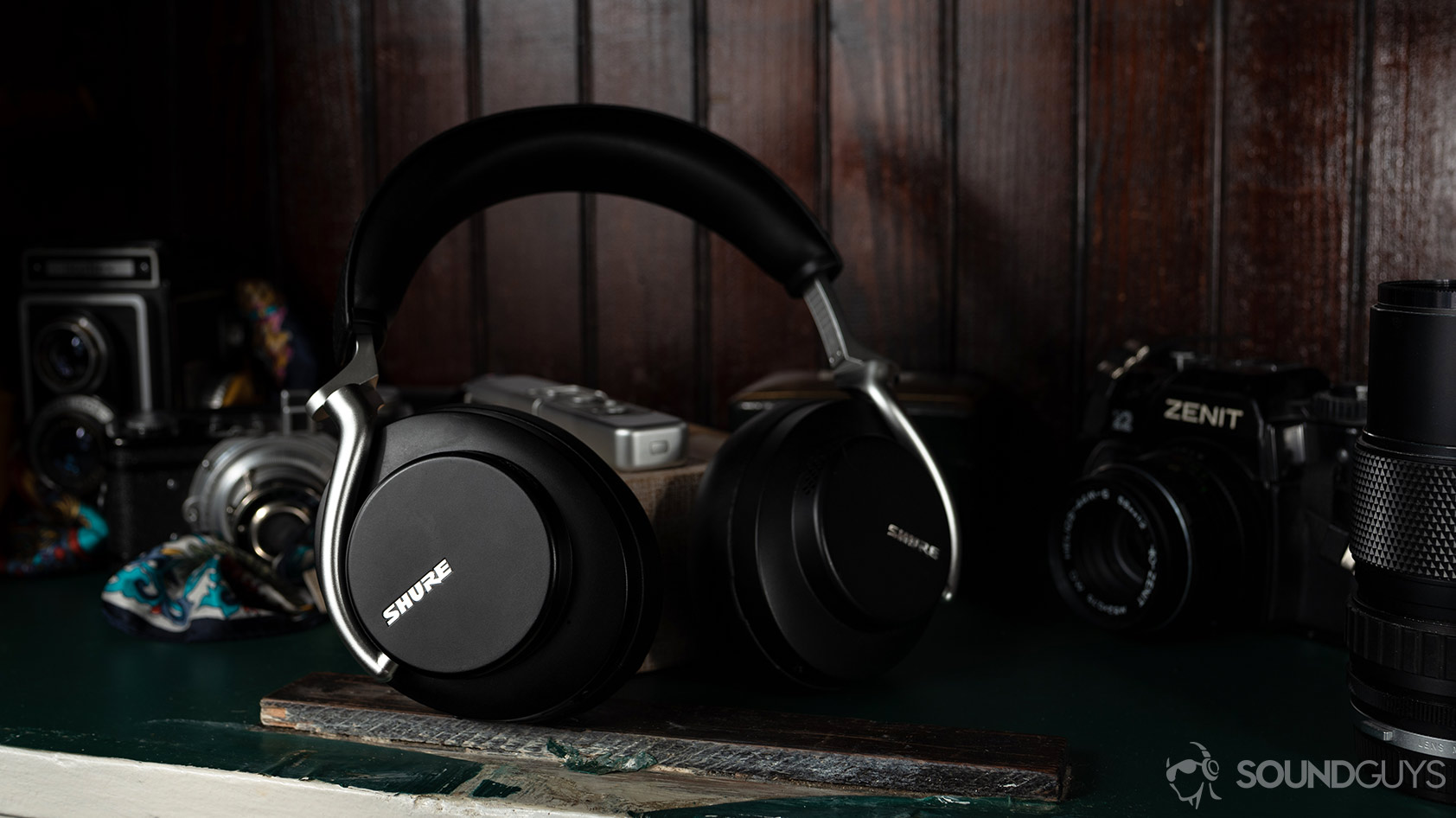
Shure’s headset has a toggle that allows users to cycle through listening modes: noise canceling, ambient listening, and off. It’s easy to find and use compared to the Bose QC 35 II, which requires listeners to download the Bose app and remap the Action Button for onboard active noise canceling control.
Does Shure or Bose have a better mobile app?
The ShurePlus PLAY app is limited: you can adjust noise canceling and passthrough intensities, and that’s pretty much it. You can EQ the sound, but it only affects the music that’s played through the ShurePlus PLAY app and is really only good for local files. The most important feature is firmware update access. While Shure seldom released updates, the ones it does release are important: its release of firmware version 0.4.9.0 greatly improved microphone quality. It’s safe to assume that if other issues arise, the company will address them.
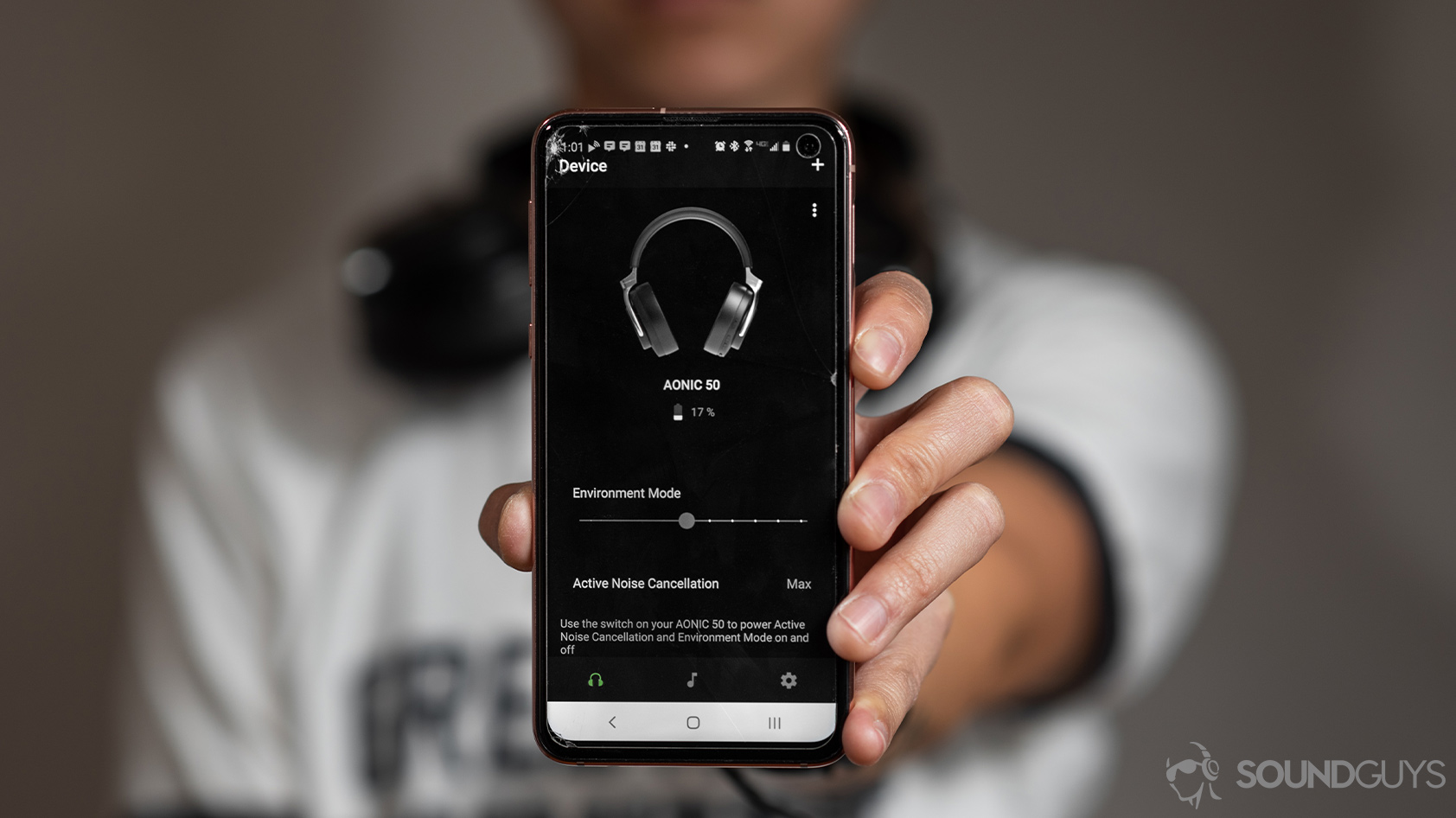
Bose’s mobile app is much more feature-packed than Shure’s, because you can access key features of the Bose QuietComfort 35 II, and set an auto-timer to power the headset off. The Bose Connect app doesn’t let you equalize the sound though, so you need to go to a third-party app for that. You can also stream music from one phone to multiple Bose headsets, which is similar to Samsung Dual Audio. Just as you can adjust the noise canceling intensity of the Shure headphones via its app, you can do the same with the Bose QC 35 II via the Bose Connect app.
Is the Shure AONIC 50 or Bose QC 35 II better for calls?
You can use either headset’s microphone system and get very good results, but neither headset will sound as good as something with an external boom mic.
Although this is a smart design, some systems take it too far and can make low voices sound “distant” or “unnatural.” With the Shure AONIC 50’s firmware version 0.4.9, the company decreased the dramatic high-pass filter, and the mic now has a more accurate frequency response. Both microphone arrays effectively reduce background noise, which is a must-have when it comes to regular hands-free calls.
Bose QuietComfort 35 II microphone demo:
Shure AONIC 50 microphone demo (firmware 0.4.9):
Which microphone do you think sound better?
The Shure AONIC 5o has better Bluetooth codec support
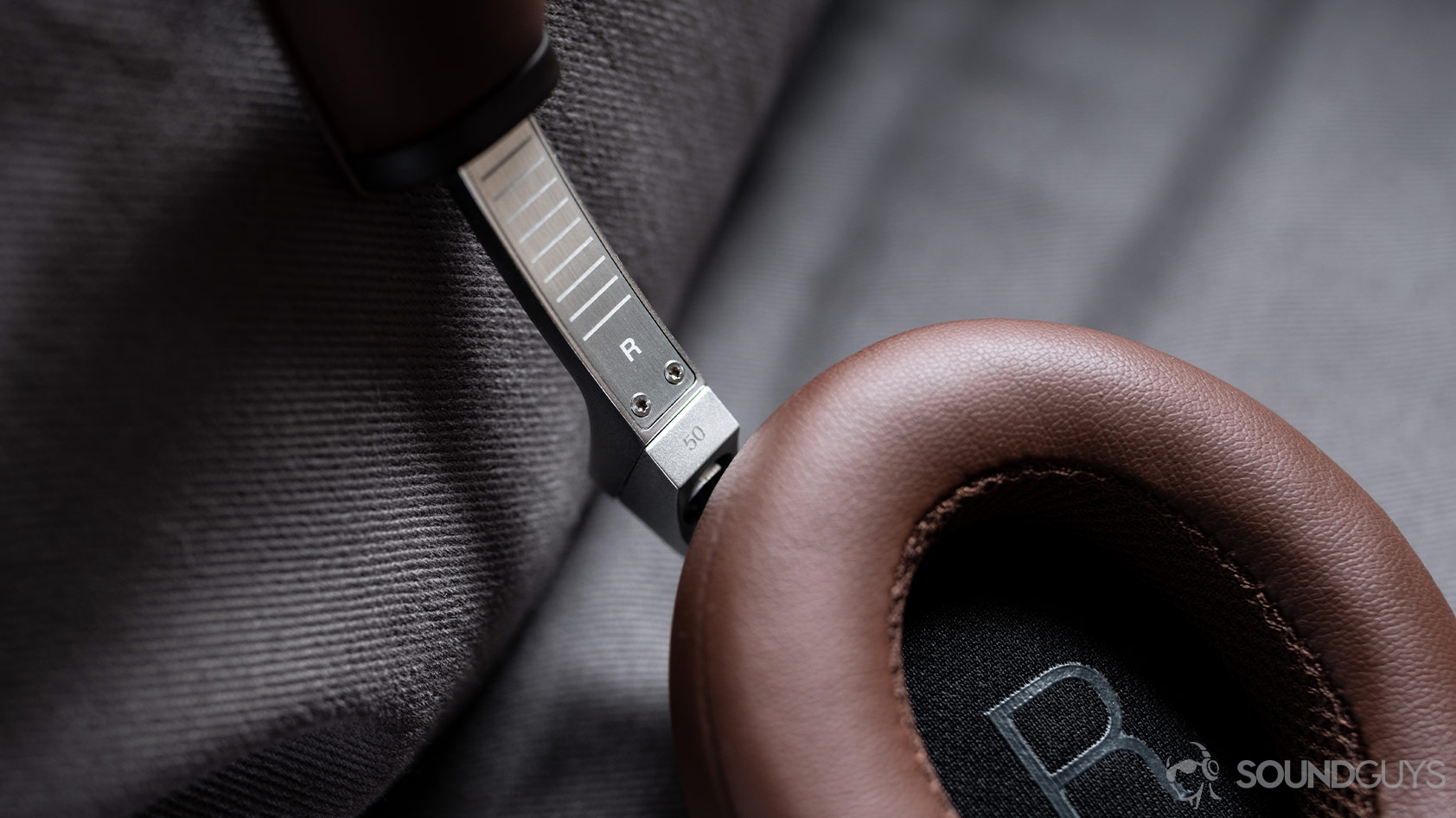
The Bose QuietComfort 35 II uses outdated Bluetooth 4.1 firmware, while the Shure AONIC 50 uses Bluetooth 5.0. Don’t let that fool you, both headsets boast reliable connection quality regardless. However, the Shure headphones support every major Bluetooth codec (aptX Low Latency, aptX HD, LDAC, aptX, AAC, and SBC), while Bose’s headphones are limited to AAC and SBC. iPhone users will benefit the most from Bose’s wireless streaming because AAC is stable on iOS, but it struggles to remain consistent on Android. Anyone who streams a lot of videos to their Android device should get the Shure AONIC 50 for lag-free videos.
| Shure Aonic 50 | Sony WH-1000XM3 | Bose Headphones 700 | Bose QC 35 II | |
|---|---|---|---|---|
SBC | Shure Aonic 50 ✔ | Sony WH-1000XM3 ✔ | Bose Headphones 700 ✔ | Bose QC 35 II ✔ |
AAC | Shure Aonic 50 ✔ | Sony WH-1000XM3 ✔ | Bose Headphones 700 ✔ | Bose QC 35 II ✔ |
aptX | Shure Aonic 50 ✔ | Sony WH-1000XM3 ✔ | Bose Headphones 700 | Bose QC 35 II |
aptX HD | Shure Aonic 50 ✔ | Sony WH-1000XM3 ✔ | Bose Headphones 700 | Bose QC 35 II |
aptX LL | Shure Aonic 50 ✔ | Sony WH-1000XM3 | Bose Headphones 700 | Bose QC 35 II |
LDAC | Shure Aonic 50 ✔ | Sony WH-1000XM3 ✔ | Bose Headphones 700 | Bose QC 35 II |
Both headsets support multipoint connectivity, which is when one headset is connected to two or more devices at a time. This functionality is considered a premium feature and lets listeners engage in desktop video chats while simultaneously keeping an ear on incoming mobile notifications.
Battery life is almost identical between the headsets
![Bose QuietComfort 35 II[5] An aerial picture of the Bose QuietComfort 35 II on a gridded surface next to two smartphones.](https://www.soundguys.com/wp-content/uploads/2017/10/Bose-QC35-II5.jpg)
We subject every audio product to a constant 75dB(SPL) output until the batteries were drained. Anytime we test ANC headphones, we make sure to max out noise canceling during testing. The Shure AONIC 50 affords 19 hours, 46 minutes of constant playback, while the Bose QuietComfort 35 II lasts 15 hours, 46 minutes on a single charge. Both support fast charging, and Bose’s technology is slightly more efficient than Shure’s.
Shure AONIC 50 vs Bose QuietComfort 35 II: Noise canceling performance
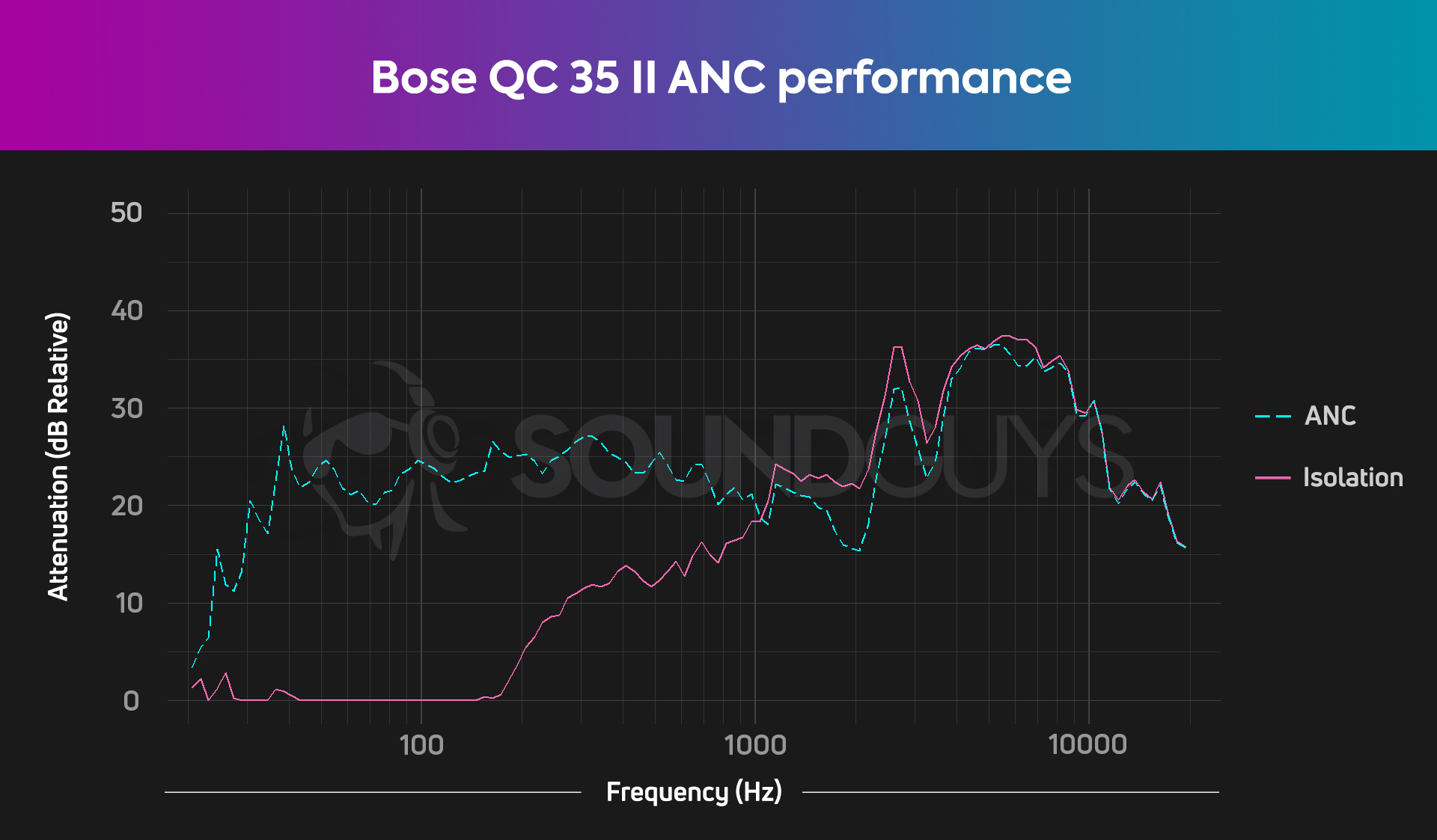
Both are excellent noise cancelers, but the Bose QC 35 II is the winner here. Midrange and treble frequencies, which cover the sound of human voices and ambient noises, are also more effectively filtered out by the Bose QuietComfort 35 II, and it’s done so with greater consistency.
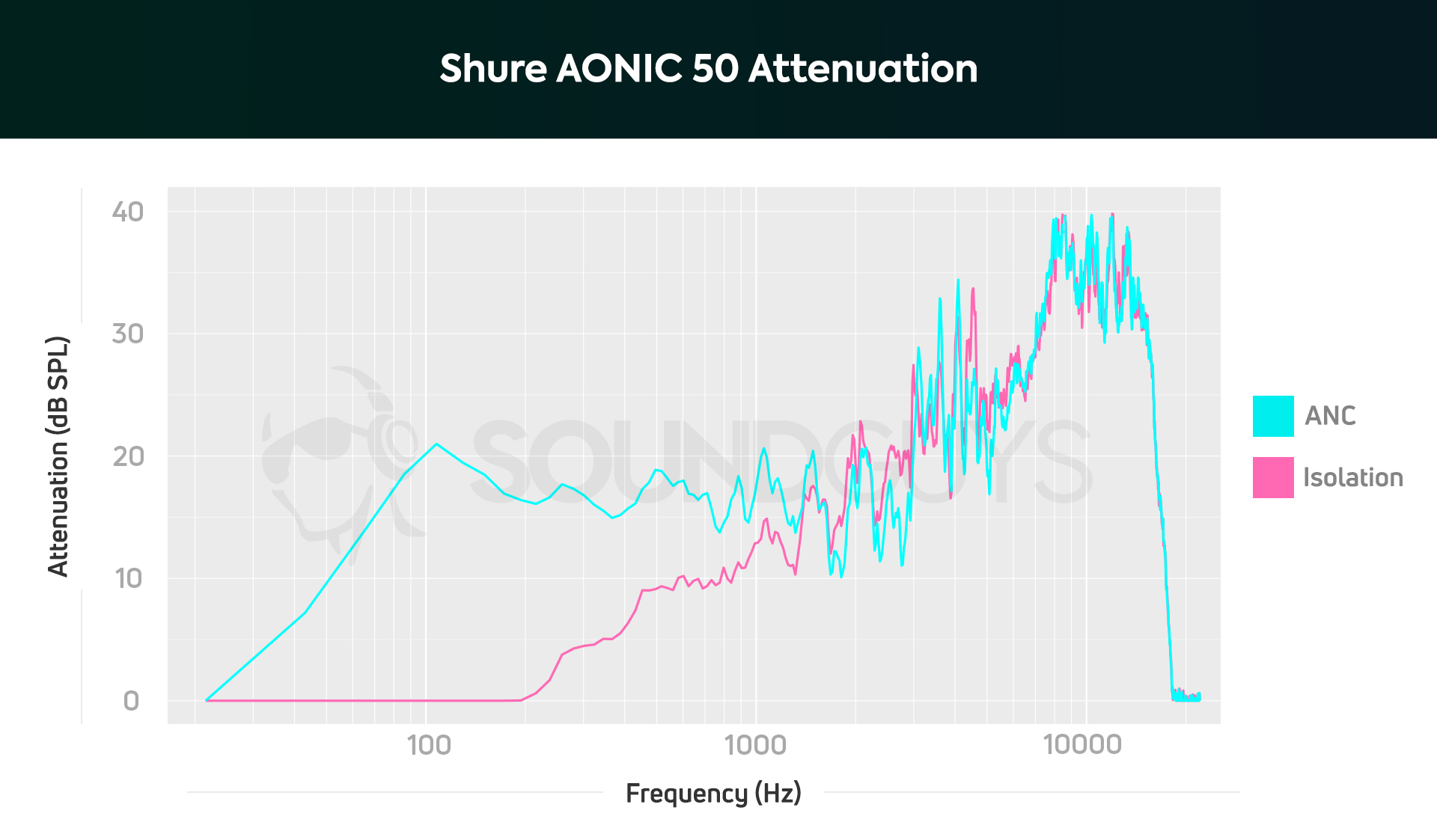
Although noise canceling performance varies between the two headsets, you’re investing in your auditory health regardless of which you choose. When our environment is loud enough to make hearing music harder—a phenomenon called auditory masking—many decide to increase the volume to drown out the noise. Over time, repeating this behavior can cause noise-induced hearing loss. Active noise canceling technology reduces that risk by reducing outside noise.
Related: Sony WH-1000XM4 vs. Bose Noise Canceling Headphones 700
Do the Bose QuietComfort 35 II or Shure AONIC 50 sound better?
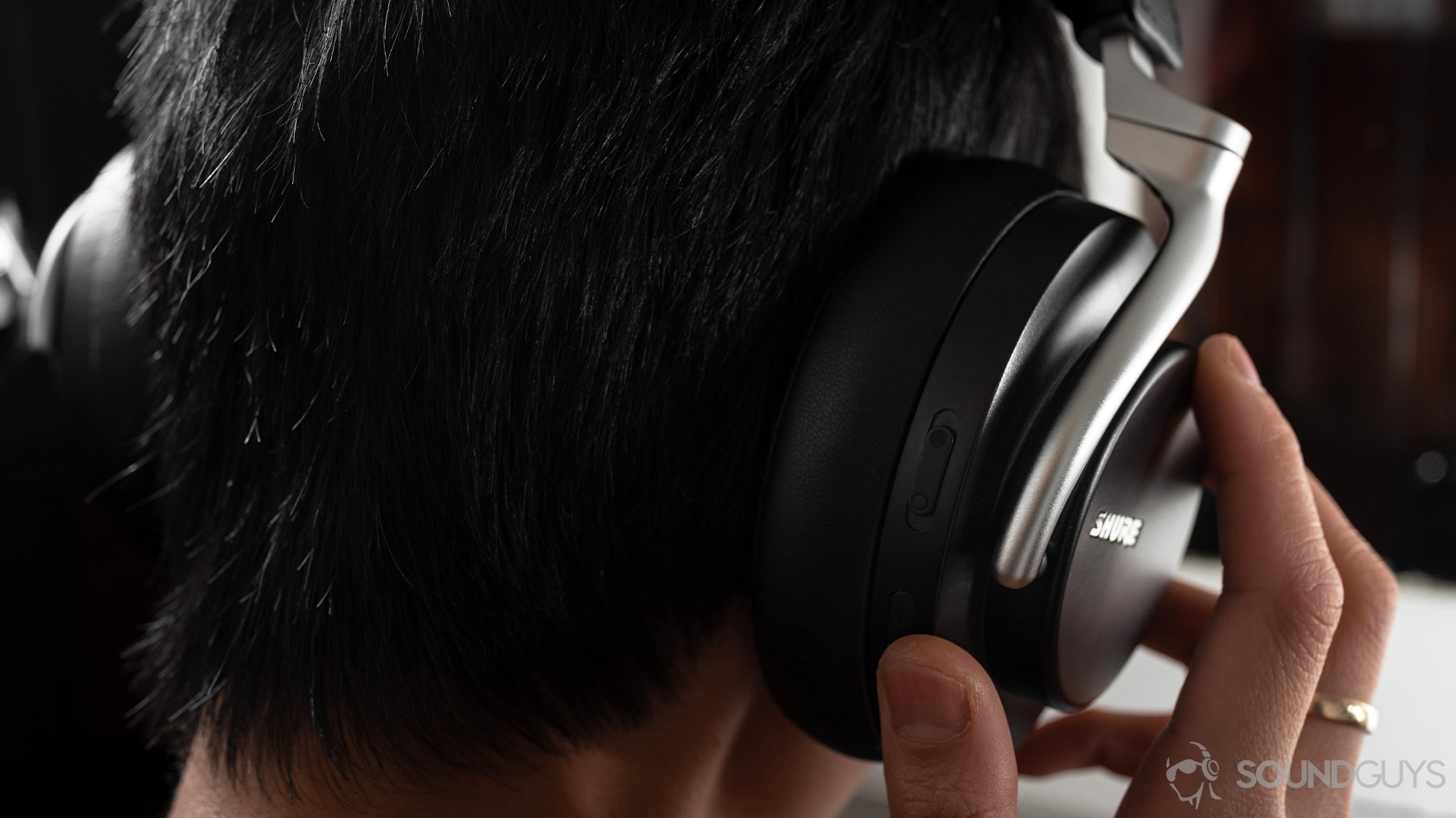
Both companies offer stellar budget and premium audio products, but sound quality preferences are subjective, and this comes down to a matter of personal preference.
Related: Best Bose headphones
Right from the jump, the Bose QuietComfort 35 II sound wonderful: they accurately reproduce notes across the entire audible spectrum. The sub-bass emphasis adds a bit of oomph to your music, which most consumers enjoy, without making it hard to hear vocals and accompanying instruments. Despite the stellar response, the headset only supports SBC and AAC. This means high-bitrate playback isn’t possible, and you may notice signs of compression during loud music.
With the firmware version 0.4.9, the Shure AONIC 50 no longer de-emphasizes sub-bass notes. Shure’s headphones also emphasize upper-bass notes. This makes it easier for you to hear important musical tones such as vocals and fundamental notes of popular instruments (like guitars and drums). Midrange notes are also reproduced accurately, and the lightly emphasized treble allows for greater perceived clarity.
The bass bump makes the AONIC 50 more consumer-friendly than the Bose QC 35 II without going overboard. What’s more, the wide Bluetooth codec support means listeners can enjoy higher-quality audio across platforms—a huge advantage over the QC 35 II.
Bose only supports one high-quality codec, so Android listeners are likely to notice compression artifacts at high volumes.
Again, what an individual enjoys is highly subjective. Some listeners look for extreme accuracy, while others deem that “boring”—all that matters is that the headset sounds good to you. This section is difficult to call, but we’re giving it to Shure. The strategic amplification of bass and treble frequencies is immediately pleasing.
Shure AONIC 50 vs Bose QuietComfort 35 II: What’s the best?
The Shure AONIC 50 wins here, but it’s not a complete victory. That doesn’t preclude the Bose QuietComfort 35 II from being a top-notch headset, though.
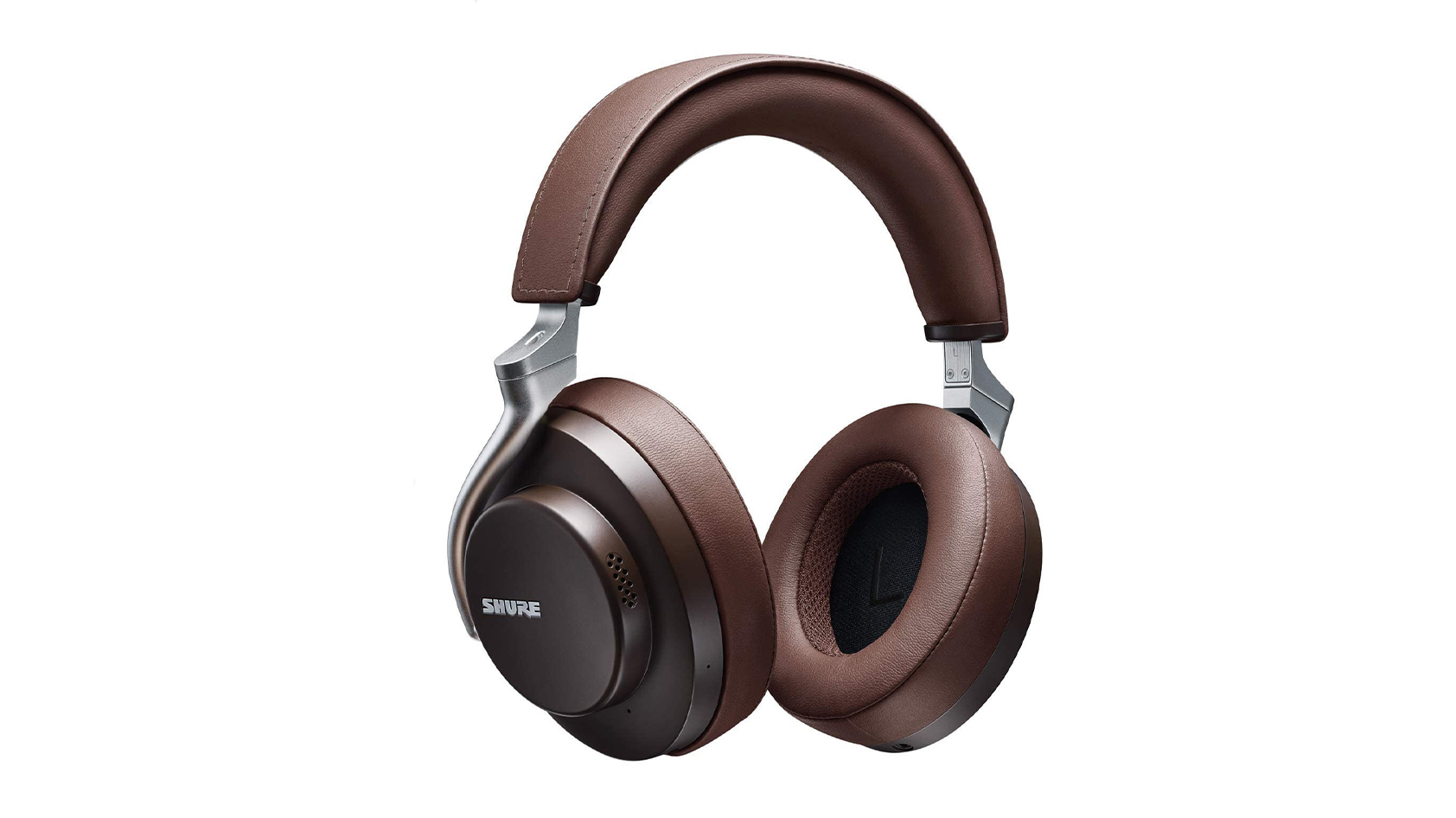
Bose has done a commendable job keeping its former flagship updated. Plus, there’s value to consider: the Bose QuietComfort 35 II cost $300 now, a whole $100 less than the Shure AONIC 50. While Shure’s noise canceling makes a huge difference compared to the QC 35 II, both are great headphones. Listeners who value ANC performance should get the QuietComfort 35 II and enjoy the $100 saved on something else.
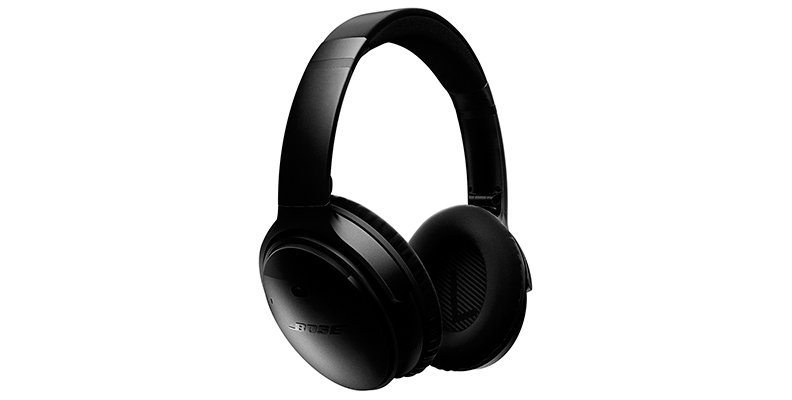
What should you get instead of the AONIC 50 and Bose QC 35 II?
If you want an even more feature-heavy product with excellent active noise canceling, look into the Sony WH-1000XM4. With this headset and its mobile app, you get access to Sony 360 Reality Audio, speak-to-chat and transparency modes, automatic ear detection, a custom EQ module, and more. The WH-1000XM4 isn’t perfect: Bluetooth multipoint won’t work with LDAC streaming, and the headset bumps Android owners down to AAC, but if you can look past a few of its quirks, you’ll be happy with your purchase.
Alternatively, the Sony WF-WF-1000XM4 is a great pocketable alternative that outperforms the AirPods Pro. Perhaps you want to stay in Bose’s lane. In that case, we recommend the Bose QuietComfort Earbuds or the much larger Bose Noise Canceling Headphones 700. Sure, the Headphones 700 doesn’t have quite as effective ANC as the QC 35 II, but you can customize its sound and enjoy more modern features like USB-C charging and touch controls.
Thank you for being part of our community. Read our Comment Policy before posting.